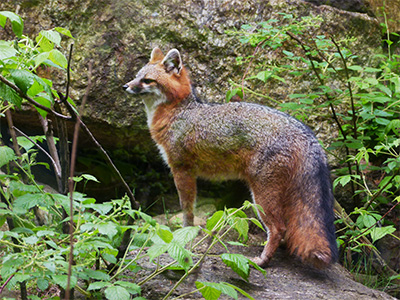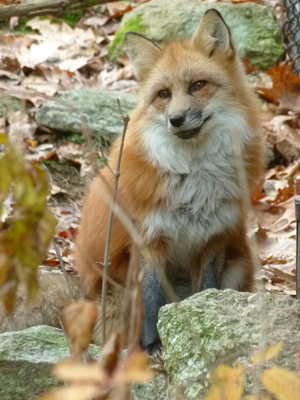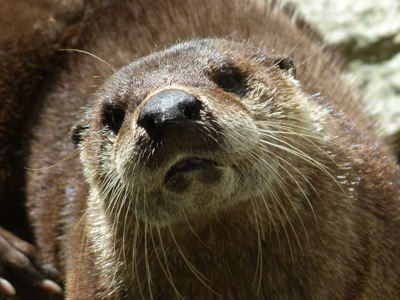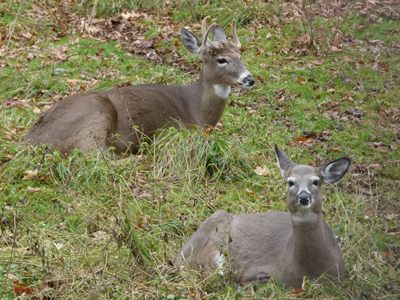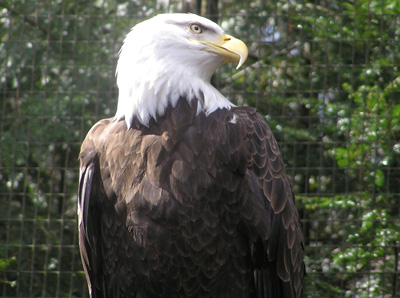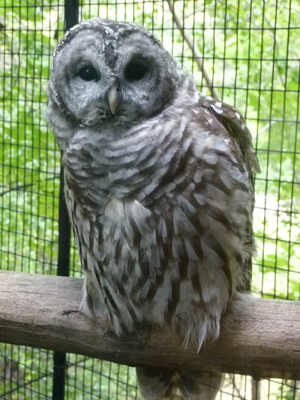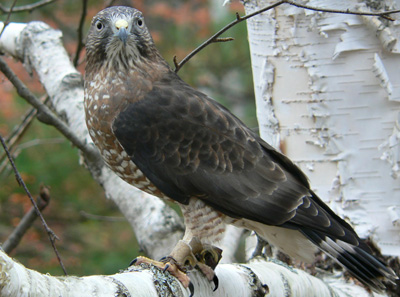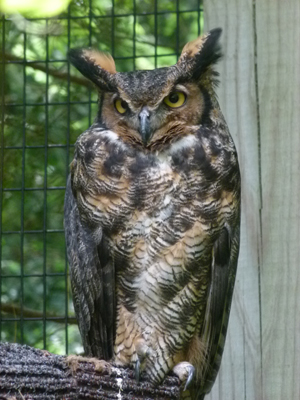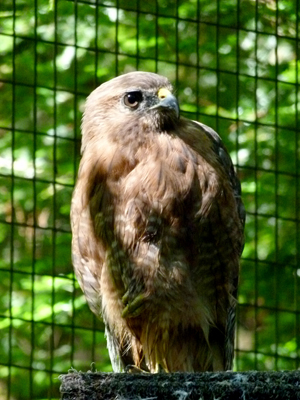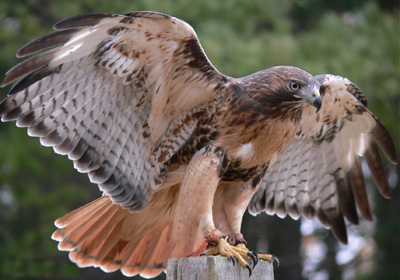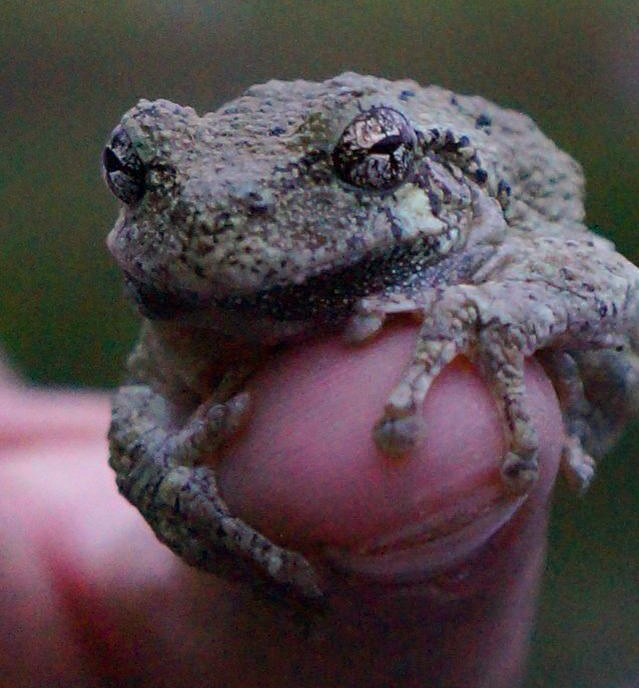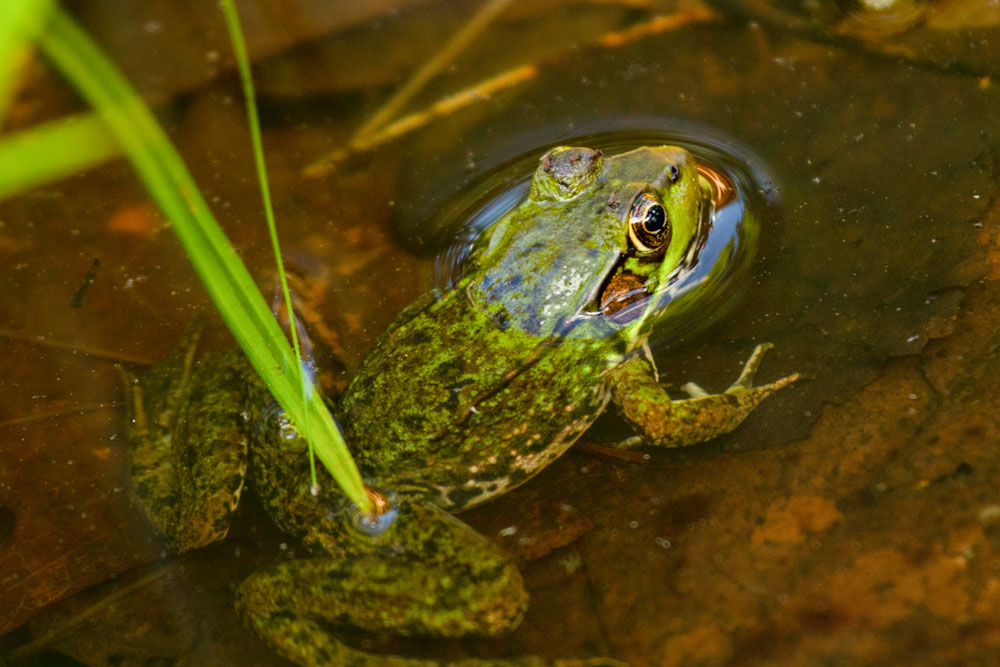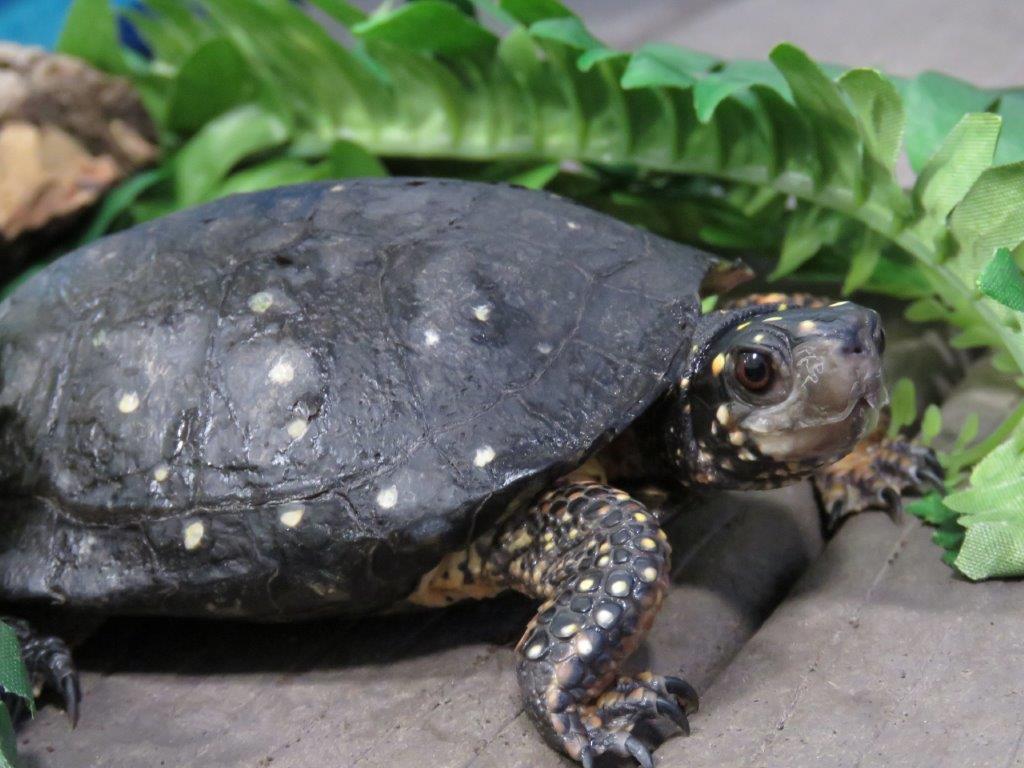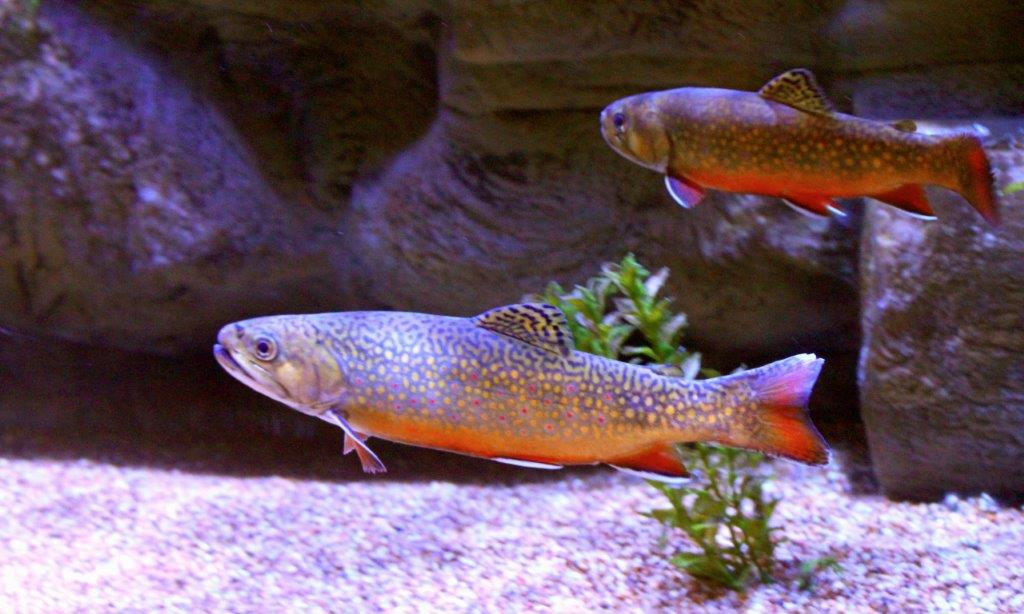Painted Turtle
Chrysemys picta
| Kingdom | Animalia |
|---|---|
| Phylum | Chordata |
| Class | Reptilia |
| Order | Testudines |
| Family | Emydidae |
| Genus | Chrysemys |
| Species | C. picta |
| Lifespan | Up to 35 to 40 years |
| Size | Females are 4 to 10 inches long versus 3 to 6 inches for males |
| Offspring | 2 to 20 eggs per clutch, usually 4 to 8 eggs per clutch |
| Status | Common |
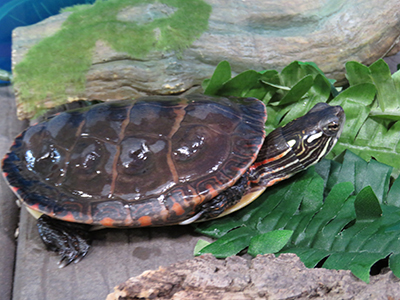
About Painted Turtles
What does the painted turtle look like?
The painted turtle has a dark green shell with bright red and orange markings along the edge. They also have yellow and red stripes on their legs, neck, face,and head as well as a pair of bright yellow spots just behind each eye. The plastron or bottom of the shell is yellowish in color. The carapace is slightly flattened and can grow from 4 to 10 inches. Females tend to be larger than the males and have shorter front claws.
Where are painted turtles found?
They are the most common turtle found in New England and are found in slow moving shallow streams, rivers, lakes, and ponds. They prefer soft bottoms with vegetation and half-submerged logs and rarely leave these bodies of water. They are active from March to November in the northern part of their range but may be active all year long in the warmer, southern parts of their range.
What do painted turtles eat?
Young painted turtles feed on aquatic insects, crustaceans, tadpoles, fish, and snails. An adult turtle’s diet may also consist of carrion and plants including: cattail seeds, cattail stems, and algae. Adult painted turtles have few predators but skunks, raccoons, and foxes may eat the eggs from nests. Frogs, snakes, wading birds, predatory fish, and alligators may also eat hatchlings.
Where do painted turtles lay their eggs?
Eggs are laid in May and June usually peeking during the second week in June in New Hampshire. They choose spots with good sun exposure and relatively easy digging – gravel pits, sand banks, lawns, or mowed grassy areas work well. Using her hind feet, a female turtle excavates a cavity about four inches deep where she lays approximately 4 to 8 soft, oval-shaped eggs. Afterwards she covers the nest with soil, leaving little sign of its presence. The young turtles hatch in late August or early September. In northern areas the eggs may overwinter in the nest and hatch the following spring.
When are painted turtles most active?
Painted turtles are diurnal and are most active in the morning where they are found basking on logs, banks, or even each other. They become inactive at night and may sleep at the bottom of a pond or on a partially submerged object like a rock. Painted turtles hibernate at the bottom of a pond during the winter to avoid extremely cold temperatures.They may become active in the spring shortly after the ice begins to melt and also after the ice has begun to form in late fall.
Fun Facts!
- The sun determines the sex of the hatchlings. Warmer temperatures in the nest produce female turtles while cooler temperatures result in males.
- Turtles are ectothermic or cold-blooded.
- Painted turtles must eat in the water, because their tongue does not move freely and they cannot manipulate food well on land.






